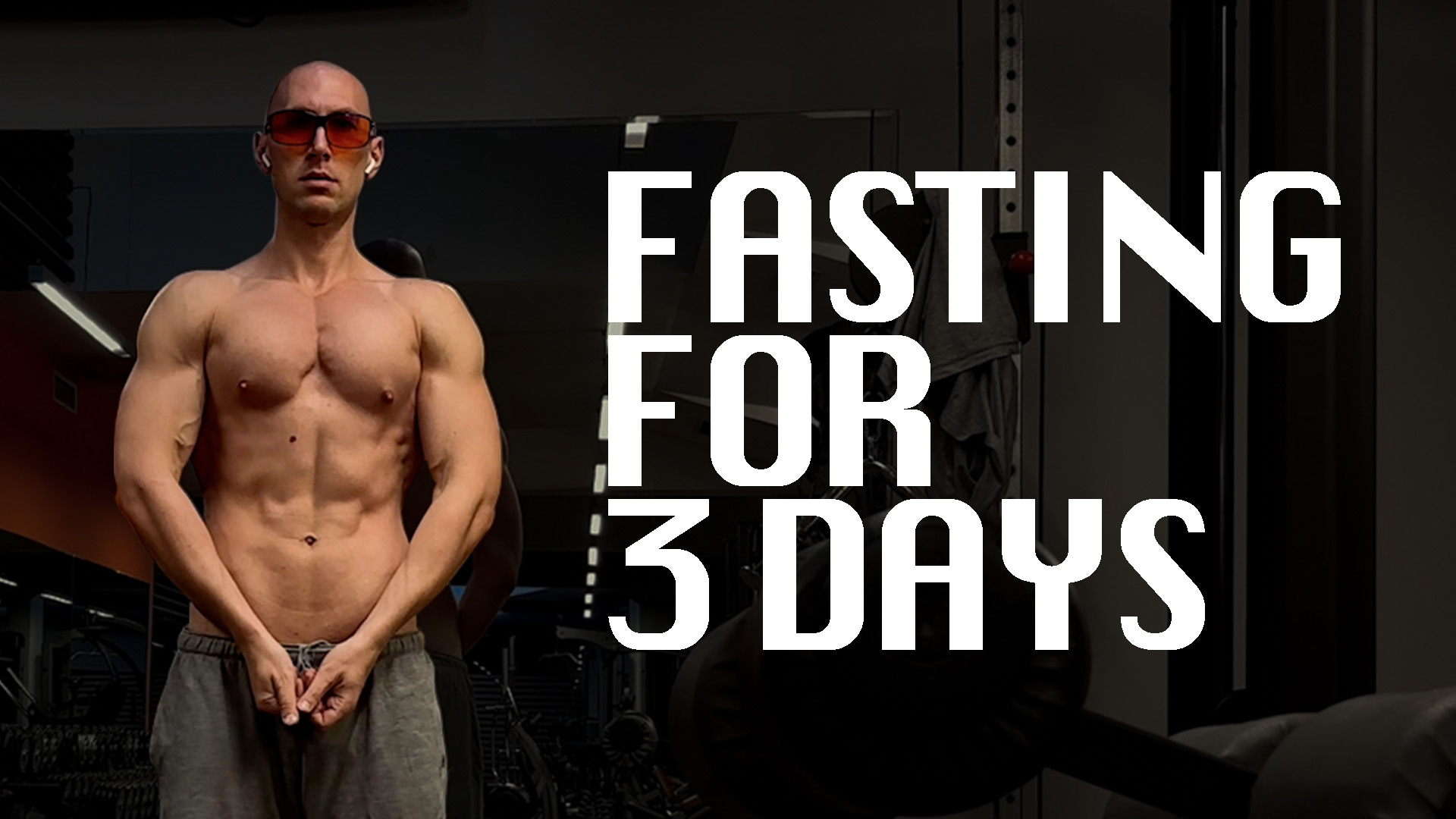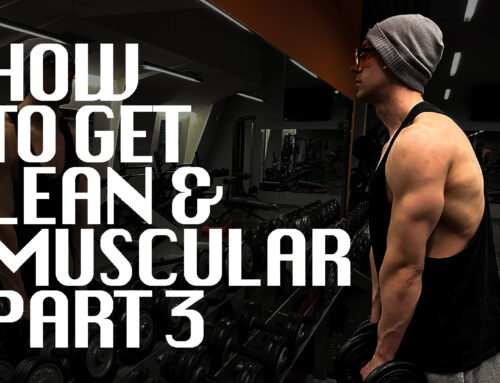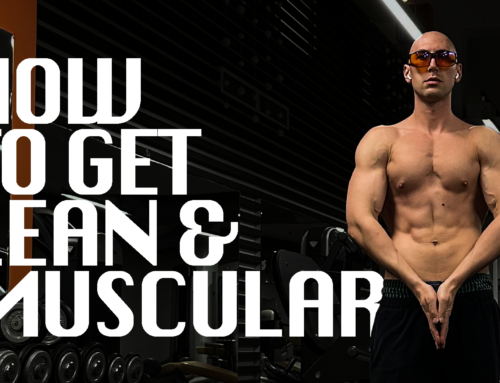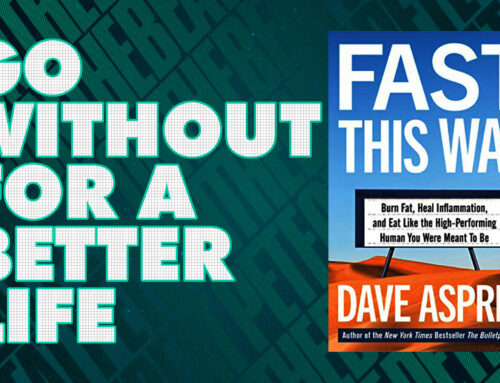Introduction
Although I managed to keep it at bay during the pandemic, I got COVID a few weeks ago. Avoiding antibiotics, by all means, I trusted my instincts, doing what always worked for me. While that began with taking plenty of rest, it also included one 72 and another 48-hour fast. Missing uploading on this channel, I decided to share this little experience, such as what I learned from this and my previous multi-day fasts.
Disclaimer
Let me begin with the first by clarifying my content is purely for educational and/or entertaining purposes.
I am neither a doctor nor a medical professional; I’m sharing my perspective as someone staying on OMAD for about a decade while using extended fasts occasionally. Please don’t take anything I say as medical advice.
Health
Personal Experience (COVID)
Besides unbearable fatigue and inability to do anything, COVID also caused a very high temperature. While that felt very bad, it was no longer a thing around the 50th hour of my 3-day fast. It’s important to note I was by no means cured, nor without temperature, at that point. Nonetheless, I was able (and actually wanted) to move around. Also, to go for a walk at the local park and do things like cleaning.
The Biggest Improvement
The most significant and quickest improvement occurred during those 3 days of not eating. Then I had a meal, felt my recovery somewhat staggered, and did another 48-56 hour fast. After that, I felt virtually recovered but drained, having a slightly elevated temperature. I could train. And I did a home leg session with a lower volume. The next or the day after, I was entirely healed and fully functioning.
No Antibiotics
I’m sharing this because I recovered much quicker than my relatives and acquaintances. Some would argue that I am very active and train a lot. On the contrary, I know people who do the same. Yet when they got it, they needed twice as long to recover from COVID… And some used antibiotics. Unlike them, I had a negative test in about a week, feeling a lot better with almost no treatment. I was (also) already hitting the gym and grinding. And in 10 days, I even trained with my typical volume and frequency. Whether my fasting helped, I can’t say with absolute certainty. Apparently, I’m not a scientist able to test my results; I can only share them and look at some science.
Studies
The longer we fast, the more our bodies trigger processes like autophagy, burning toxic proteins, and damaged cells. Also, the more readily they combat illnesses, including viral infections. As my viewers know, fasting boosts immunity. According to numerous studies, fasting lowers inflammation while increasing antioxidants. And the more you do it, the more it does that.
Lower Risks of Hospitalization
A 2022 study by Dr. Benjamin Horne, published in the BMJ Journals, showed that intermittent fasting is, in fact, associated with lower risks of hospitalization or mortality in patients with COVID-19. Also, with less severe complications. Hence, it could be used for immune support during and after the pandemic.
The Power of BHB
In another study published on Nature.com, Karagiannis et al. show how β-hydroxybutyrate (BHB), aka the blood ketone your body uses for fuel, improves COVID-19 outcomes. Moreover, the study showed how BHB reprograms CD4+T cells, which are crucial for achieving an effective immune response to pathogens and increasing immunity in COVID-19.This is very important because BHB is precisely what your body starts producing when you fast for long enough.
BodyRecomp and Multi-Day Fasts
Right off the bat: Multi-day fasts get you leaner extremely fast! I cannot stress this enough. As a bodybuilder, OMAD is my sweet spot; it effortlessly allows me to look (let’s say) ‘good enough’ naked while increasing muscle maturity and density. On the other hand, nothing compares to extended fasting regarding purely getting shredded. Even for 2-3 days, prolonged fasting (always) makes me noticeably leaner, increasing separation and definition. Writing this now, I regret not having the iPhone 14 Pro, the unboxing of which you can watch here, during my last 2 and 3-day fasts. It would have been cool to capture the difference in my physique. Though very ‘sedentary’ for the time being, I got remarkably leaner. That included more visible arteries in my inner and upper pecs, veins on my inner thighs, etc.
Better Skin
Even more than OMAD, multi-day fasts also make your skin look fabulous. My girlfriend remains impressed by my skin. Especially when she considers I never used any skincare and always shaved my body without shaving foam. This is very important because no matter how much lean mass you have, your skin always affects how your muscles look. And multi-day fasts improve your skin tremendously, making it thinner. So your work can really stand out.
How to Fast for 3 days
Simple as it sounds, there are two keys to a successful multi-day fast. As reiterated in my first book, those are having stable blood glucose and not being hungry for the time being. You can fast for as long as you want as long as you have that. I suggest gradually reaching that stage by suppressing your appetite and achieving high metabolic flexibility. There’s no need to rush into anything. Just become highly fat-adapted and capable of switching fuel sources, make eating OMAD as natural as breathing, and do a few two-day fasts, and you’ll be there. Remember, patience is required. Willpower isn’t.
Willpower and Fasting
How Not to Fast for longer and shorter time frames
Likely the worst when getting into longer — or even shorter — fasts is having delusions about relying on willpower. In her best seller, The Willpower Instinct, Standford professor, Kelly McGonigal, unravels that despite being miraculous, and ‘making us individuals in a society,’ willpower is a limited resource. Once spent, it makes you dysfunctional by causing conditions like willpower depletion, decision fatigue, and the more-severe brain overdrive.
Don’t Be Discouraged
This isn’t to discourage you that you won’t be able to pull it off. Maybe you will, for short. Especially if you’re a masochist, overzealously watching former navy seal content. On the contrary, that won’t last, and for the time being, you’ll be cranky, moody, severely unproductive, and basically starving. Due to having blood sugar dysregulation, you might also expect jitters or feeling like fainting. Meaning that even if you succeed temporarily, all your activities will suffer.
Your Willpower is on a Budget
In my first book, I liken willpower to being on a budget. You won’t be able to pay your bills at the end of the month if you spend all that on something stupid the first week. Identically, you won’t be fit to study, perform, or master that new skill you want if you spend all your willpower on food-related dilemmas.
Willpower as An Emotion
A more modern perspective on willpower is that of Toronto’s psychology professor, Michael Inzlicht, and Nyr Eal, the author of the best-sellers Indistractable and Hooked. According to them, since there isn’t an existing resource (or substance) to be spent, willpower isn’t limited; instead, it’s an emotion that ebbs and flows, having ups and downs. I bet we all know what happens when willpower is on the lower, and you attempt to use it to control hunger.
Small Steps
Whatever perspective you find more sense-making or reasonable doesn’t matter. The bottom line is that willpower has enormous limitations. Therefore, it is very unreliable. This is precisely why books like James Clear’s Atomic Habits, BJ Fogg’s Tiny Habits, and Benjamin Hardy’s Willpower Doesn’t Work all became such colossal successes. That includes outperforming others, explaining all failure with the mere lack of discipline and willpower without even defining what that is and where it comes from scientifically. They all convey one fundamental rule based on practicality and not idealistically romanticizing discipline: To succeed at anything, you must build the habit. Making that happen requires starting small, breaking it into tiny segments you can readily and religiously engage in. Only then you won’t need willpower. So the little habits grow, becoming part of your identity independently.
Proper Nutrition
Apparently, nutrition plays a huge role in fasting. A diet that keeps stable blood glucose and triggers the release of the satiety signals cholecystokinin (CCK) and PYY does miracles in supporting your aims for longer fasts. Nonetheless, this doesn’t replace the mentioned gradual adaptation and small steps.
Personal Experience (Adaptation)
Like many others, I started with two meals and 8-16, then transitioned to 4-20, then to OMAD, and then to OMAD with occasional multi-day fasts, making my former food addiction seem a nightmare that never happened. Based on that, this is the easiest way of becoming more metaphorically said ‘food-independent’ and hungerless, doing multi-day fasts whenever you please.
How to Break a 3-day Fast
With all due respect to all the people pushing great information on fasting, I don’t think breaking 2-3-day fasts with bone broth, let alone green juices, is mandatory or the only way to do it. If you are new to multi-day fasts doing them as some challenge and/or aren’t a hard training athlete, then the liquid foods might be reasonable.
More to Consider
On the contrary, if you have been on OMAD for years, incorporating such fasts occasionally, your body is likely used to larger refeeds and various macros. Those are natural to it, just like fasting. Hopefully, you also know what foods you should eat. That said, I don’t think you should do anything special to “ease” your stomach into refeeding, but rather focus on supplying your body with the raw material for optimal recovery and performance.
Personal Experience (How I Break My Fast)
Truth be told, up until now, I never ‘broke’ a multi-day fast with bone broth or anything similar. The only prolonged fast I ‘broke’ with a beef soup were those 3 days during my COVID week. I didn’t do it because I followed some protocol; I did it because I felt my body needed it. I also ensured the soup had plenty of meat, unlike the standard broth.
My Meal
Otherwise, I broke all my multi-day fasts with what I typically ate in a given period. Between 2014 and 2016, it was meats, eggs, sour cream, and butter. Later it alternated those days with lean meats, veggies, and safe starches like sweet potatoes. Now it is a salad with chicken (or fish or lean beef) and white basmati or parboiled rice, as I am starting the meal with a large protein shake and 90-99% dark chocolate.
Are Longer Fasts Dangerous
Usually, people are very opinionated regarding this one. On the contrary, I firmly believe multi-day fasts are perfectly safe and even essential.
A Month of Fasting
When fasting, our bodies burn stored energy, making us leaner. It is said that the average person carries about 40 000 calories of stored body fat which is an amount to last for a month. Thereby nothing ‘bad’ will happen as long as your body already accesses those stores readily. If it would, there wouldn’t be a program for fasting astronauts when sending them on missions.
Angus Barbieri
Besides that, you can consider religious practices like Ramadan, such as the story of Angus Barbieri. In 1965 Barbieri began a 382-day fast, during which he lost 272 pounds, which is almost 1.5 times my body weight, and I’d call myself muscular 6’4.
Multi-day Fasts and Training
I don’t think multi-day fast and training are mutually exclusive. Moreover, depending on your adaptation, they might go hand-to-hand. The longer you don’t eat, the more your body accesses the stored fat. Experiencing that, many people report feeling invigorated and having more energy. Plus, resistance training makes the body mobilize more stored energy, and thus it facilitates your adaptation. It also helps preserve lean body mass. To learn more about the latter I sugest the works of Dr. Peter Attia.
Personal Experience
While doing double splits 6-7 days per week, I adopted 2 weekly 48-hour fasts during the winter of 2015. I didn’t get any side effects or issues. Instead, I kept great mood and energy levels, having 4 to 4.6 blood glucose which to me feels ideal.
Your First Multi-Day Fasts
If you are new to multi-day fasts, take things slow and use the time to increase awareness of how fasting feels. The key is not pushing yourself to prove a point because of a pointless challenge; instead is to succeed, becoming more attuned to your body. So use the time to do just that, tracking your blood sugar levels and linking them to how you feel. This is very important during your first extended fasts. Also, drink plenty of spring water, preferably stored in food-grade/stainless steel containers. Set reminders on your phone if needed; that’s crucial.
Fasting and Inner Work
Considering that fasting boosts clarity, another good idea might be to reflect on your totality as a human being. You can do this by using mindfulness and meditation techniques if you are more of a new-ager or a mystic. Or some practical occultism if you seek what one of the ‘greatest’ teachers called ‘scientific illuminism.’ If the latter is true, I suggest looking at my other channel, where I dive into topics like Hermetic Qabalah, Magic(k), and Enochian through book reviews and breakdowns of techniques. And if you like tech reviews, please visit my tech channel, where I post unboxings of and experiences with the tech I use.
BodyRecomp and Multi-Day Fasts
- An Autobiography of Trauma Book Review - April 23, 2024
- Reflections on Being a Polymath - April 12, 2024
- Greater Hexagram Ritual Manual Overview - March 31, 2024







